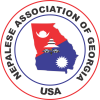*Press Release share request from our Nepali community!
Requester: Dr. Prakash Malla
IMMEDIATE RELEASE
May 02, 2015
Contact Persons:
Ramesh B. Malla, Ph.D., Editor in Chief
Chair, Joint ANMF/ASNEngr/CAN-USA Initiative Earthquake Preparedness and Disaster Relief in Nepal
Founding President (2007-2012), American Society of Nepalese Engineers (ASNEngr)
Department of Civil & Environmental Engineering
University of Connecticut, Storrs, CT 06269, U.S.A.
Kanhaiya Kayastha, M.S., P.E., S.E. (ASNEngr), Associate Editor
Sunil Sharma, M.D., MPH (ANMF), Associate Editor
Suresh P. Ojha, M.S. (CAN-USA), Associate Editor
Contact E-mail: Earthquake@ASNEngr.org
American Society of Nepalese Engineers (ASNEngr),
America Nepal Medical Foundation (ANMF), and
Computer Association of Nepal–USA (CAN-USA) jointly releases
Earthquake Preparedness and Disaster Relief in Nepal
– A Position Paper
Prompted by the devastating Haiti earthquake of January 2010, members of the Nepali community living in the United States undertook a joint initiative, led by the three professional, non-profit organizations – to understand the current state of earthquake preparedness in Nepal. The lead organizations are the American Society of Nepalese Engineers (ASNEngr), America Nepal Medical Foundation (ANMF) and the Computer Association of Nepal–USA (CAN-USA).
Nepal is one of the world’s most earthquake-prone countries. Being a rugged, mountainous, land-locked country with a single small-sized international airport, Nepal will likely suffer greater human casualties than Haiti. The United Nations and other organizations that assess earthquake hazards, currently rank Kathmandu at the highest risk for fatalities from a majorearthquake than any other city in the world.
In modern days, Nepal has witnessed unreguÂlated, uncontrolled, and rapid urban growth, particularly in the Kathmandu Valley, which is inhabited by approximately 2.5 million people. It is estimated that a Modified Mercalli Intensity Scale IX earthquake (Richter scale of approximately 7 or greater) would result in a catastrophic 100,000 deaths, 300,000 injured, and nearly 1.5 million homeless in the Kathmandu Valley. Furthermore, 60% of buildings will be destroyed beyond repair, the airport will likely be isolated because of destroyed roads and bridges, and 60% of telephone lines will be useless for at least one month. Approximately, 80% of previously reviewed hospitals in the Kathmandu Valley would not meet the required safety level and would be nonfunctional; 20% are at high risk of life-threatening collapse.
The areas of infrastructure (building, bridges, roads, water supply, etc.), transportation systems, telecommunication networks, medical, and other essential services will be quickly overwhelmed. Kathmandu, therefore, requires unprecedented preparedness to endure the burden of widespread structural destruction and mass casualties resulting from such a major earthquake. Since the exact timing of earthquakes is impossible to predict, disaster preparedÂness is the crucial factor that we can plan and implement now to minimize the loss of lives and property.
This 110-page document titled “Earthquake Preparedness and Disaster Relief in Nepal – A Position Paper†outlines the challenges that Nepal will face, if and when, another large magnitude earthquake strikes. It presents technical information on earthquake preparedness, mitigation, training, and rescue operations that will be needed before, during, and after a majorearthquake. The suggestions and recommendations in this document are intended to be preliminary. They are divided into three main areas of concern in earthquake disaster mitigation: engineering, communication, and medical and public health.
The government of Nepal has started to establish a rudimentary foundation for earthquake preparedness. With focused, concerted effort and greater willingness from all sectors, Nepal has an opportunity to be a leader and a role model in developing a sustainable and sound disaster preparedness program for resource- poor countries.
We hope that this position paper will create a pathway for implementation and initiate the necessary plans for establishing a coordinated mechanism to draw together the resources and efforts by public and private stakeholders both in Nepal and the U.S. We also hope that the information presented in this paper will help generate constructive and meaningful questions and discussions towards better preparedness and mitigation of earthquake-related hazards and tragic situations expected from major earthquakes.
As this position paper was going to press, we heard news of a major 7.8 magnitude (Richter) earthquake with the epicenter at Gorkha District in Nepal, April 25, 2015, followed by a series of frequent aftershocks, including a strong 6.7 magnitude aftershock the next day. This has resulted in a large number of casualties (7171 dead, 1480 in Kathmandu alone, and 14446 injured at this time) and severe damage to buildings, homes and temples, including the world heritage Basantapur Durbar Square in central Kathmandu. The historical landmark Dharahara observation tower in Sundhara, Kathmandu which was recommended for an immediate seismic-retrofit in this report has collapsed. Early reports indicate considerable damage to infrastructure and extensive damage to local traditional houses, for as much as 90 percent to 100 percent, in some hard-hit villages leaving thousands homeless in these areas. The final casualty reports have not yet been received. We hope this position paper will contribute to needed discussions on future efforts of preparedness and enhancement of the country’s total earthquake resiliency program. Now there is a need to review the lessons learned in the areas of engineering, communications and medical care in the immediate response and recovery periods following thisearthquake.
We are greatly saddened and grieved by the loss of life and property caused by this recent devastating earthquake. Our hearts and minds go to Nepal at this trying and difficult moment.
The position paper can be found at the following links:
ASNEngr – http://www.asnengr.org/
ANMF – www.
CAN-USA – http://www.CAN-USA.org

Recent Comments